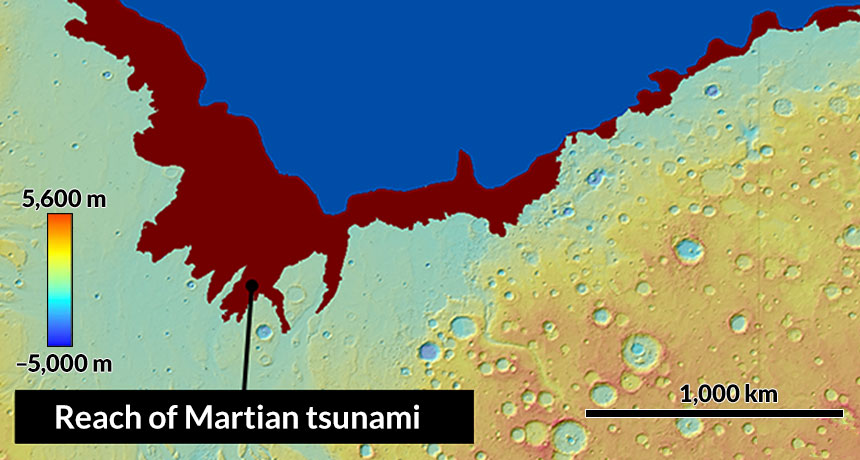Ancient tsunamis reshaped Mars’ landscape
Signs of waves shore up evidence for past ocean on the Red Planet

SURF’S UP Meteorite impacts may have generated supersized tsunamis on Mars that reshaped the coastlines of an ocean around 3.4 billion years ago. Red-shaded region shows the reach of the more recent of two tsunamis.
A. Rodriguez